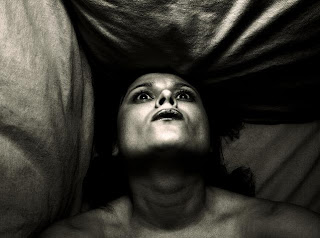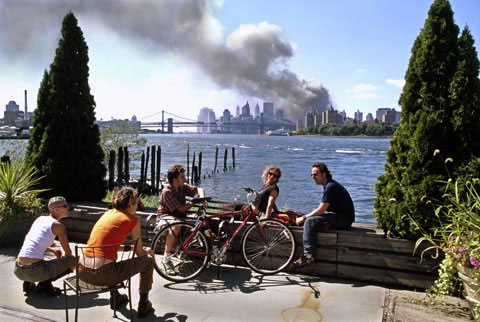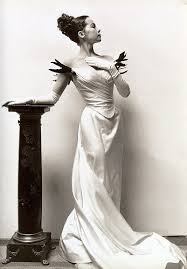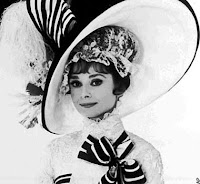Eithsham.A Level 3 Photo
Total Pageviews
Wednesday 28 March 2012
Wednesday 21 March 2012
Wednesday 1 February 2012
Photoshop Made Easy - Alan Sugar
Tools That I Used:
Lasso = L key
Quickmask = Q Key
Scale the layer = cmd J
Copy the layer = cmd J
= V key to drag
Move Tool V
Tuesday 13 December 2011
Tuesday 29 November 2011
My Final In-Solitude Photographs
Saturday 12 November 2011
Treatment Photography - In Solitude
Treatment Photography
1. Type of production and brief details on Subject/Concept:
I will be capturing in solitude photographs. It will consist by capturing these images around Crawley town areas and a few quiet parks, I will also search for any trees or plants, flowers on the interent in order to get a few ideas for my project. I will also see and look out for flowers on its own in an open area in which it is on its own and will represent in solitude photography, and in relevant to this I will also look out for people whom are on their own, and ask their permission. In addition to this I will also look out for any buskers, which will then show off that how separate and alone their really are. This will also show off my creative in solitude photography, I could also use the studio and get a few shots from there and pose some in solitude shots.
I will be capturing in solitude photographs. It will consist by capturing these images around Crawley town areas and a few quiet parks, I will also search for any trees or plants, flowers on the interent in order to get a few ideas for my project. I will also see and look out for flowers on its own in an open area in which it is on its own and will represent in solitude photography, and in relevant to this I will also look out for people whom are on their own, and ask their permission. In addition to this I will also look out for any buskers, which will then show off that how separate and alone their really are. This will also show off my creative in solitude photography, I could also use the studio and get a few shots from there and pose some in solitude shots.
2. Facilities: What facilities do you need for this project list all including software and hardware for the whole project:
The facilities I will need is my camera which it Canon 450d, possibly a tripod and a spare micro sd card, just in case the memory gets full up. I will also need to use software’s, in which it will enable me to edit my images if needed, a software that I will use is adobe photoshop, this will consist of me cropping my images, delete any inappropriate background. But, overall I shall not over do the image as it will show that I have manipulated the image. It will also be useful to afford a studio, where I can get a few models and do some in solitude photographs in the studio. Also a good computer like a imac and the printer should be ready to use and available for editing the pictures that I have taken, I could also print my pictures in HD resolution in order to get a better result.
The facilities I will need is my camera which it Canon 450d, possibly a tripod and a spare micro sd card, just in case the memory gets full up. I will also need to use software’s, in which it will enable me to edit my images if needed, a software that I will use is adobe photoshop, this will consist of me cropping my images, delete any inappropriate background. But, overall I shall not over do the image as it will show that I have manipulated the image. It will also be useful to afford a studio, where I can get a few models and do some in solitude photographs in the studio. Also a good computer like a imac and the printer should be ready to use and available for editing the pictures that I have taken, I could also print my pictures in HD resolution in order to get a better result.
3. Finance: If you produced this project outside of the college you need to show how much would it cost to hire the equipment that you intend to use:
If I were to do complete this project in a week,then these equipment will cost as follows
If I were to do complete this project in a week,then these equipment will cost as follows
- Canon 450d camera - £100.83 for a weekly hire
- Canon Lens - £80
- Laptop 15" Mac book - £134.00
- HP Printer Deskjet - £120
- Refill Ink Cartdridges - Black & White - £13.99
Colour - £16.99 - Tripod - £80
- SanDisk 8GB Card - £8 for a weekly hire
- Photo Editing Software Adobe Photoshop - £23 for a monthly rent
4. Contributors: Who do you need to help this for you project? This includes talent and crew.
In this project, I might need help with how the settings and how the camera operates, I might also need help help with the shutter speed and how it works, also I would need the camera myself to get a improved idea that how the camera works and functions. I will also experiment with my models to get into different poses for my in solitude photography.
5. Presentation: How will you present the pictures? Will you include a soundtrack, think about copy write issues etc.
Once, I have captured my in solitude images, then I shall present it in a powerpoint presentation, this is because that it will be timed and we would see the images in a certain time, I will also consist of a background soundtrack, the type of soundtrack I might need is an emotional song that can convery in solitude photography and I think that the song and the pictures should go well with each other, that is how this will work. If i do use a well known soundtrack then I will clearly show this on my prestentation and clearly say that there is "No copy infrungment is intended and it is used for entertainment purposes only", something which is along these lines.
Saturday 5 November 2011
Solitude Photography
What Is Solitude Photography?
Solitude photography is simply taking photographs of a specific object i.e. a tree in an empty field, with nothing around, or a person on his possibly looking sad and lonely. These solitude images convey a feeling of loneliness and separation from everything else. A few excellent examples of these images are shown below:


I can say that there is an ocean of a difference between solitude and loneliness. Solitude is your own conscience choice to be alone, irrespective of whether you have a galaxy of friends or not. When your in solitude, you don't crave or think about others. Every human being needs a solitude, the time which he can spend for himself/herself, the time when he feels he is at peace. loneliness is something that you have no choice, you're alone because you don't have others around you.
Shy people for example are often victims of loneliness. On the other hand, there are people whose interest in something which makes them get withdrawn from their social life, for example scientists, artists of course many who are lonely end up seeking solitude.
Loneliness is a state of mind, you can be with thousands of people yet you feel, so secluded, isolated and different from the rest. Yet, I feel that loneliness affects your mind and solitude doesn't.
I've decided to go with "In Solitude" as the theme to my photography assignment, I wanted to keep a theme to my photographs, keeping most of them black and white or very discoloured, giving them a slightly old, nostalgia feel, which is something that jumps into my mind when thinking about solitude. I also wanted to play with the edit of the photographs and lighting, with bright fill lights to give the photographs a very deep look to them, especially if I take a few portrait style photos.

Solitude photography is simply taking photographs of a specific object i.e. a tree in an empty field, with nothing around, or a person on his possibly looking sad and lonely. These solitude images convey a feeling of loneliness and separation from everything else. A few excellent examples of these images are shown below:


I can say that there is an ocean of a difference between solitude and loneliness. Solitude is your own conscience choice to be alone, irrespective of whether you have a galaxy of friends or not. When your in solitude, you don't crave or think about others. Every human being needs a solitude, the time which he can spend for himself/herself, the time when he feels he is at peace. loneliness is something that you have no choice, you're alone because you don't have others around you.
Shy people for example are often victims of loneliness. On the other hand, there are people whose interest in something which makes them get withdrawn from their social life, for example scientists, artists of course many who are lonely end up seeking solitude.
Loneliness is a state of mind, you can be with thousands of people yet you feel, so secluded, isolated and different from the rest. Yet, I feel that loneliness affects your mind and solitude doesn't.
I've decided to go with "In Solitude" as the theme to my photography assignment, I wanted to keep a theme to my photographs, keeping most of them black and white or very discoloured, giving them a slightly old, nostalgia feel, which is something that jumps into my mind when thinking about solitude. I also wanted to play with the edit of the photographs and lighting, with bright fill lights to give the photographs a very deep look to them, especially if I take a few portrait style photos.

Thomas Hoepkar 9 11 Photo
It was the day when I changed my feelings about this forsaking happening. This was one of the most controversial days in history and this is said to be one of the most memorable days to happen in the entire world. We were all happy to see this amazing icon for this residence and to represent this to the entire globe, we would try and get a smallest peak and thrive towards it to see how it’s really like, even drivers would try and get passed in their half million pound Mercedes. Funny that is, many of us would stand next to it and take a picture with family and friends. Of, course even tourists would do that, wouldn’t they? That’s too is excellent. But unfortunately all of these happy times had all shattered, right across our very eyes, waiting and waiting to come down. This is and was one of the most talked about situation in the past and it still is today, this was the day when the whole world had changed. This is 9 11.
All of us had witnessed this; this may be the news, radio, television and pictures. But, there was one image where it had made us all thinking and made was wonder what the real deal was with this controversial picture and our reactions to it. This image was taken on 11 September 2001. By a photographer named Thomas Hoepker.
This image shows a group of New Yorkers sitting chatting in the sun in a park in Brooklyn. Behind them is a horrifying grey cloud of smoke and dust rising above lower Manhattan from the place where two towers were struck by hijacked airliners this same morning and have collapsed, people getting killed by fire, smoke, falling or jumping or crushing and tearing and injured in the buildings.
This image shows a group of New Yorkers sitting chatting in the sun in a park in Brooklyn. Behind them is a horrifying grey cloud of smoke and dust rising above lower Manhattan from the place where two towers were struck by hijacked airliners this same morning and have collapsed, people getting killed by fire, smoke, falling or jumping or crushing and tearing and injured in the buildings.
Five years on this image was released to the whole world to see, as released this was becoming one of the most iconic photographs of 9 11, yet it’s getting massive responses. Hoepker was a senior figure and a classic photographer of renowned Magnum photographers co-operative, as he chose not to publish it in 2001 and had excluded it from being on the Magnum pictures on that devastating day. In 2006 this image had appeared in a book and this had caused instant controversy. However many critics had responded to this image such as Frank Rich, critic and columnist said that it is a failure to learn any deep lessons from that tragic day, to change or reform as a nation: "The young people in Mr Hoepker's photo aren't necessarily callous. They're just American." Rich's view of the picture was instantly disputed. Walter Sipser, identifying himself as the guy in shades at the right of the picture, said he and his girlfriend, apparently sunbathing on a wall, were in fact "in a profound state of shock and disbelief". Hoepker, they both complained, had photographed them without permission in a way that misrepresented their feelings and behaviour. In Which I believe that it could be possibly true, but also it had made us think that didn’t they know they were being photographed. After all, they could also be too drawn to the towers and not what’s happening around them.
Today, this photograph has us all thinking about this picture. It also has no reason for us to judge individuals within the picture, but to note that which photographer captured the moment, there is also a reason why the photograph was not published for five years the reason maybe because of the humility and the embarrassment that Hoepkar would have once released to the press and the media.
And so on, it has been ten years that many people had remembered this controversial picture and whilst people remember, our memories will fade fast. We are the people who our lives went on; we will eventually fade these in our vast memory. We may have separated ourselves with the Americas happenings; we may have touched or untouched ourselves with the people around us. But, this will forever remain the same in America.

Wednesday 12 October 2011
Fashion Photography
Fashion Photography is a genre of photography which is devoted and includes and displays clothing and other fashion items. Fashion photography is most often seen from advertisments or fashion magazines. Many of these include from Vogue, Vanity Fair and Elle. Over its time fashion photography has devloped in its own aesthetic in which has led into an enhanced present of locations and its accessories, in order to go with the fashion clothes.


To what degree should the image be manipulated to go into a fashion magazine?
Fashion, fashion, fashion!. This appeals to us especially when it comes to fashion photography in magazines. They appeal to us because they are glossy and include attractive images and of "usually" of attractive people (or famous ones). They are also very competitive because they would want you to notice them and to pick and read the magazine, in which it will intend in you to buying them at the end, once you have seen it thoughtfully. But,there is also a slight catch which is that more often than not, images have been altered historically with painstaking tricks of lighting and exposure and, more recently, with retouching software that can make celebrities and models look thinner, taller, unblemished, with brighter eyes and whiter teeth. Seemingly perfect. Advances in digital photography have made it so easy to manipulate photographs that cover models often resemble weirdly synthesized creatures.

Retouching fashion photographs to make the models appear better looking isn't anything new. The ethics of modifying photos of Hollywood actresses has been debated since the 1930s, when Hollywood photographers manipulated images to make the women appear more glamorous, according to the 2009 article, "Smile and Say 'No Photoshop,'" by Eric Wilson, which was published in "The New York Times." There are various ways of retouching or manipulating fashion images. Most touch-ups are done to improve the look of the model or to enhance sales of the product being advertised. With a variety of retouching software available, it's common for fashion photographers to manipulate photos using computer technology. This allows a photographer to make a model appear thinner, enhance her eye color or remove excess skin from her chin or cheeks, according to "Photojournalism: An Ethical Approach," by Paul Martin Lester.
| Front Cover Of a Vogue Magazine |
Cecil Beaton started his career as a society photographer in 1926 with an exhibition in London which had won him and immediate contract with Vogue, where he had worked there for thirty years. His sense of style was inspired by his biggest aspirations like E.O. Hoppe, Edward Steichen and Baron de Mayer, in which they were the most successful photographers of the 1910's and 20s. Beaton's fascination with the glamour and high society prevailed throughout his life and in 1937 he had became court photographer to the British Royal Family. He also became a successful syage and costume designer, most notably for 'My Fair Lady' and 'Gigi'.

To what degree should the image be manipulated to go into a fashion magazine?
Fashion, fashion, fashion!. This appeals to us especially when it comes to fashion photography in magazines. They appeal to us because they are glossy and include attractive images and of "usually" of attractive people (or famous ones). They are also very competitive because they would want you to notice them and to pick and read the magazine, in which it will intend in you to buying them at the end, once you have seen it thoughtfully. But,there is also a slight catch which is that more often than not, images have been altered historically with painstaking tricks of lighting and exposure and, more recently, with retouching software that can make celebrities and models look thinner, taller, unblemished, with brighter eyes and whiter teeth. Seemingly perfect. Advances in digital photography have made it so easy to manipulate photographs that cover models often resemble weirdly synthesized creatures.

Retouching fashion photographs to make the models appear better looking isn't anything new. The ethics of modifying photos of Hollywood actresses has been debated since the 1930s, when Hollywood photographers manipulated images to make the women appear more glamorous, according to the 2009 article, "Smile and Say 'No Photoshop,'" by Eric Wilson, which was published in "The New York Times." There are various ways of retouching or manipulating fashion images. Most touch-ups are done to improve the look of the model or to enhance sales of the product being advertised. With a variety of retouching software available, it's common for fashion photographers to manipulate photos using computer technology. This allows a photographer to make a model appear thinner, enhance her eye color or remove excess skin from her chin or cheeks, according to "Photojournalism: An Ethical Approach," by Paul Martin Lester.
- Most fashion photographers are very good at using lighting to change the appearance of an image or photograph. Natural light, incandescent light and even brightly colored lights can be used as manipulation tools. For example, when a greenish light is used in darkness, the person being photographed appears mysterious and spooky, according to the article, "Light and Color in Photography," published on Photography.com. Adjusting the direction of the lighting used on a model can create shadows or dark spaces. Air brushing is commonly used by fashion photographers, according to the article, "Air Brushing," published by Photography.com. Imperfections, such as scars, bruises or acne, can be removed by air brushing the image, making it look smooth and flawless. Although most air brushing is now done digitally, the original air-brushing technique of spraying paint onto a photo using compressed air has been used for decades to modify photos. By adding special effects, such as a fire in the distance or neon lights overhead, a photographer is able to catch a reader's attention, according to the article, "140+ Learn Awesome Photoshop Effects," published by "Tripwire Magazine" in 2011. These effects convey a sense of depth and emotion, engaging viewers and enabling the photograph to be more exciting or attention-grabbing.
Subscribe to:
Posts (Atom)



















